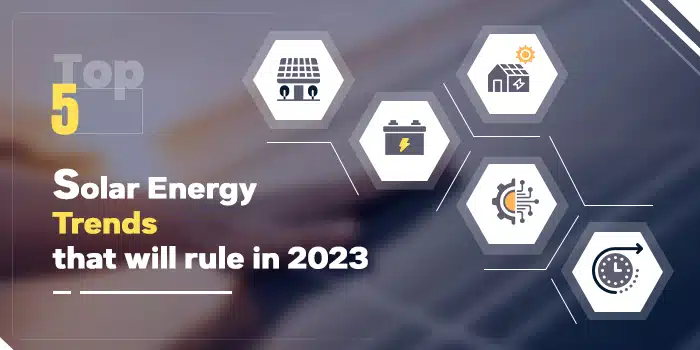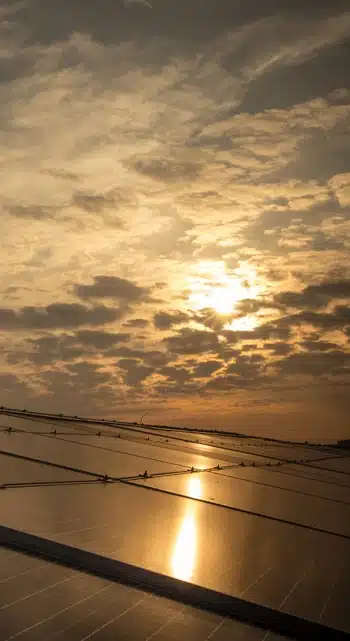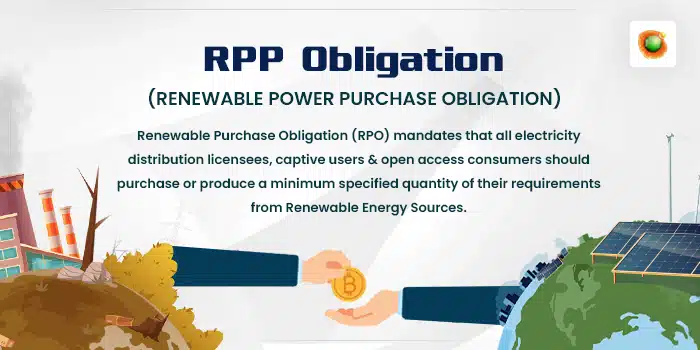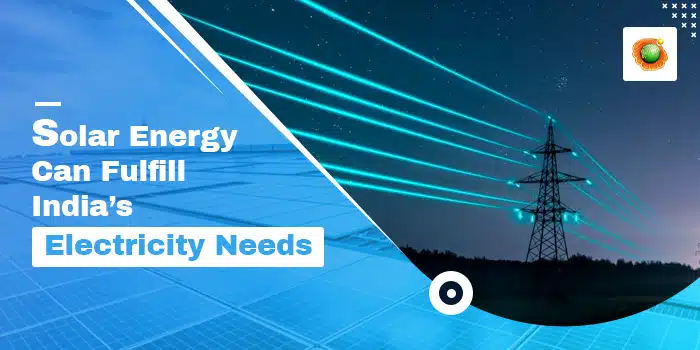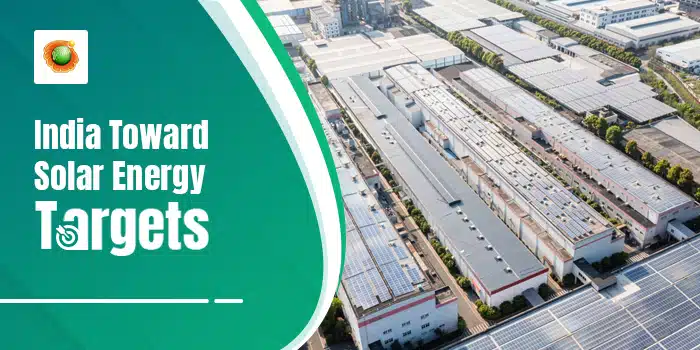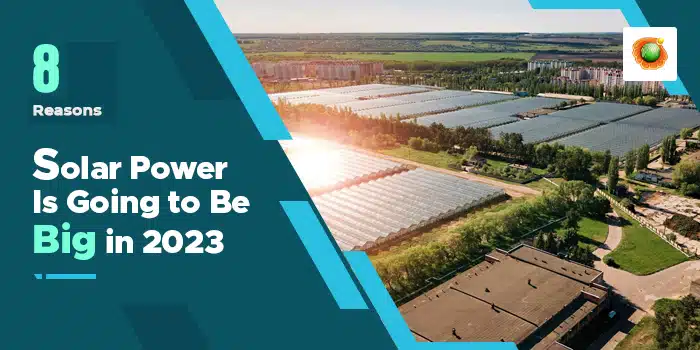It is a mechanism by which the State Electricity Regulatory Commissions oblige entities to purchase a certain percentage of power from renewable energy sources.
The Government of India has introduced many policy schemes that have led to the massive growth and development of the renewable energy sector in the country. The Ministry of New and Renewable Energy (MNRE), the Government of India along with other State Nodal Agencies (SNAs) have already taken appropriate policy initiatives for achieving the target of 175 GW of renewable energy by 2022, with a solar
capacity of 100 GW. India communicated its Intended Nationally Determined Contributions (INDCs) to the United Nations Framework Convention on Climate Change (UNFCCC) committing amongst others, mainly to reduce the emissions intensity of its GDP by 33 to 35 percent by 2030 from the 2005 level and to achieve about 40 percent cumulative electric power installed capacity from non-fossil fuel-based energy resources by 2030. These initiatives at both the international and national levels have proved to be a major motivation for energy security and reduced dependence on conventional sources of fuel.
Under section 86(1)(e) of the Electricity Act 2003 (“EA 2003”) and the National Tariff Policy 2006, Renewable purchase obligation (RPO), is a mechanism by which obligated entities (which include DISCOMs, open access consumers, and captive power producers) are obliged to purchase a certain percentage of electricity from Renewable Energy sources, as a percentage of the total consumption of electricity.
Under the RPO mechanism, the obligated entities (which include DISCOMs, open access consumers, and captive power producers) are required to mandatorily source a part of their overall electricity requirement from renewable sources. The RPO targets are set every year by the states and are divided into solar and non-solar-based renewable energy.
Categories of RPO
Entities Obligated under RPO
- Distribution Licensees
- Captive Consumers
- Open Access Consumers
Objectives for RPO
- To establish a centralized monitoring mechanism for RPO compliance through a web-based portal for all states and Union territories
- To enlist obligated entities and assess their RPO compliance
- To ease out the process of monitoring the RE transactions of obligated entities
- To develop a database that would become a tool for SERCs to audit RPO compliance
- To enhance transparency in the RPO compliance process
- Create user interfaces for obligated entities to provide data on RE purchase
- Create user interfaces for monitoring agencies to cross-verify the data provided by obligated entities
- Prepare the database for the system and analytics modules to analyze the effectiveness of the RPO regulations in the states
Covid-19 and India
Since the Covid-19 outbreak, the government has started stressing the localization of the supply chain. With new policies like “Atma Nirbhar” or self-reliant India, domestic manufacturing has become the utmost priority. The government is helping local manufacturers by making imports more expensive through safeguards and basic customs duties.
Raj Prabhu, CEO of Mercom Capital Group said, “with the government putting a lot of focus on domestic manufacturing lately, it is even more important to enforce RPOs strictly. As investments begin to flow into manufacturing and capacity starts ramping up, we need to ensure there is sufficient demand, and that is where RPO enforcement becomes critical,”
Payments to renewable generators in India are notoriously delayed by Indian distribution firms. The pandemic has worsened their already precarious financial situation, prompting the government to announce a series of emergency aid steps. Waiving state DISCOMs' RPO enforcement is one of these steps that is causing concern among renewable generators. Some have even permitted them to bring forward their RPO shortfalls to the next financial year.
States like Bihar and Punjab have allowed the RPO shortfall to be carried forward. Haryana has also waived RPO backlogs for distribution firms in the state until 2019.
Others, such as Karnataka, have extended the enforcement deadline due to the lockout and revenue loss.
In reference to these statements, executives working with renewable companies stress the fact that Covid started in March, but these states had unfulfilled RPO targets much before the pandemic even started.
Haryana and Bihar, for example, are now well behind schedule in terms of meeting their RPO goals. For FY 2020, Haryana has a 94 percent deficit, while Bihar has a 76 percent deficit. Bihar needs over 1,643 MUs of solar, while Haryana requires 3,431 MUs to meet its solar RPO requirements for FY 2020.
The course of action after the pandemic
For a long time, the majority of DISCOMs have been hesitant to achieve the objectives of RPO. Now they want lenient policies for RPO compliance. At the same time, most of the developers feel it can create a heavy negative impact on the renewable targets India has set for itself.
According to experts, instead of waiving the RPO, the DISCOMs should be advised to prefer renewable procurement for energy over traditional power. Purchasing renewable energy certificates is another choice for DISCOMs to meet their RPO goals (in addition to purchasing renewables directly from generators) (RECs). One REC certifies that the bearer owns 1 MWh of electricity generated from a renewable energy resource. These were generally considered an expensive option with solar RECs traded at as high as ₹2,400 ($32). But now, The CERC has reduced the forbearance (maximum) price of solar RECs to $1,000 ($13) and the floor price to zero. This move is intended to allow obligated companies to become more involved in the renewable energy industry.
Recognizing the need for stricter implementation of the RPO, the government increased the penalty for non-compliance in its new Draft Electricity (Amendment) Bill 2020. The penalty for non-compliance has been raised to ten million dollars ($134,288), up from a previous penalty of one hundred thousand dollars ($1,343). In the event of continued non-compliance, the penalty has been increased to $100,000
($1,343) per day from the earlier ₹6000 ($82).
The pandemic has already slowed the pace of solar production in the region, owing to halted construction, supply chain disruptions, a labor shortage, and the possibility of a recession, among other factors. If states do not strictly adhere to RPO and explore ways to avoid it, India's path towards its long-term goals will become even more difficult, and maybe, impossible.
What are Renewable Energy Certificates (RECs)?
Renewable Energy Certificates (RECs) represent the attributes of electricity generated from renewable energy sources. One REC represents that 1MWh of energy is generated from renewable sources. RECs can be used by the obligated entities to demonstrate compliance with regulatory requirements, such as Renewable Purchase Obligations. The REC is exchanged only in the power exchanges approved by CERC within the band of a floor price and forbearance (ceiling) price as notified by CERC from time to time.
Key Points
- Renewable Energy Certificates (RECs) are a market-based instrument to promote renewable sources of energy and the development of the market in electricity.
- One REC is created when the one-megawatt hour of electricity is generated from an eligible renewable energy source.
- REC acts as a tracking mechanism for solar, wind, and other green energies as they flow into the power grid.
- RECs go by many names, including Green-tag, Tradable Renewable Certificates (TRCs), Renewable Electricity Certificates, or Renewable Energy Credits.
- Under Renewable Purchase Obligation (RPO) bulk purchasers like DISComs, open access consumers, and capacitive users are required to buy a certain proportion of RECs. They can buy RECs from renewable energy producers. RPO was instituted in 2011, it is a mandate that requires large power procurers to buy a predetermined fraction of their electricity from renewable sources.
- The proportion of renewable energy for utilities is fixed by the central and state electricity regulatory commissions.
- In India, RECs are traded on two power exchanges — the Indian Energy Exchange (IEX) and the Power Exchange of India (PXIL).
- The price of RECs is determined by market demand and contained between the ‘floor price’ (minimum price) and ‘forbearance price’ (maximum price) specified by the Central Electricity Regulatory Commission (CERC).
